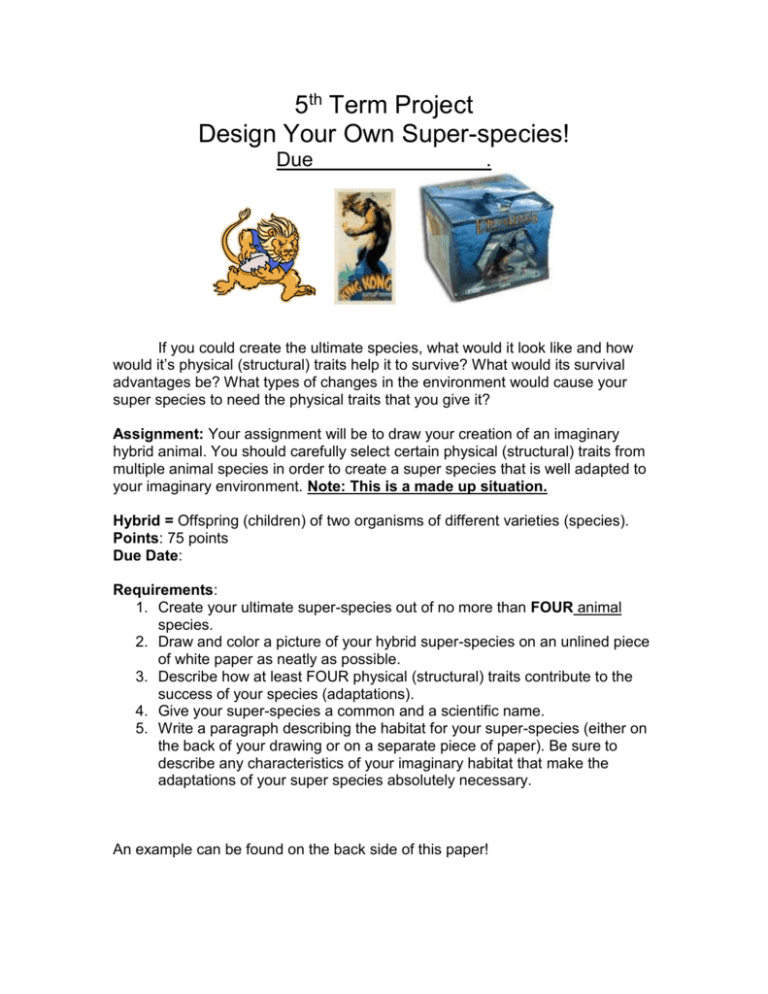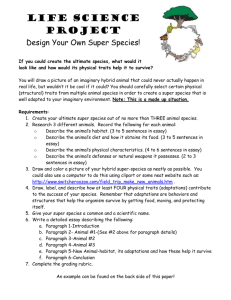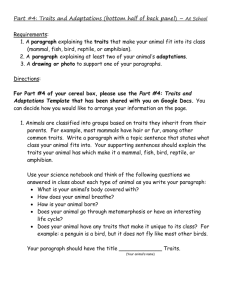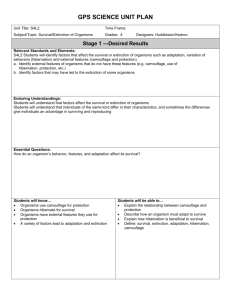3rd Term Project
advertisement

5th Term Project Design Your Own Super-species! Due _______________. If you could create the ultimate species, what would it look like and how would it’s physical (structural) traits help it to survive? What would its survival advantages be? What types of changes in the environment would cause your super species to need the physical traits that you give it? Assignment: Your assignment will be to draw your creation of an imaginary hybrid animal. You should carefully select certain physical (structural) traits from multiple animal species in order to create a super species that is well adapted to your imaginary environment. Note: This is a made up situation. Hybrid = Offspring (children) of two organisms of different varieties (species). Points: 75 points Due Date: Requirements: 1. Create your ultimate super-species out of no more than FOUR animal species. 2. Draw and color a picture of your hybrid super-species on an unlined piece of white paper as neatly as possible. 3. Describe how at least FOUR physical (structural) traits contribute to the success of your species (adaptations). 4. Give your super-species a common and a scientific name. 5. Write a paragraph describing the habitat for your super-species (either on the back of your drawing or on a separate piece of paper). Be sure to describe any characteristics of your imaginary habitat that make the adaptations of your super species absolutely necessary. An example can be found on the back side of this paper! “Quackaroo” (Birdus bizarro) Quackaroo’s Habitat: The Quackaroo lives in the wetlands of the Bear River Basin, where they are well-adapted for both terrestrial and aquatic life. They eat carp and other fish from the marshy terrain. It can also eat native plants found within the wetlands. The main predator of the Quackaroo is the Red-tailed Hawk, but the Quackaroo hides in its shell to protect itself or jumps away using its strong legs. During the long, cold winter months the Quackaroo hibernates. Hibernation begins in November when they bury themselves in the mud. They live on body fat that they stored in their bodies during the fall. In the spring, when hibernation is over, the Quackaroo mates and the offspring develop in the mother’s pouch. (The Quackaroo above was described as an example only. Do not interpret as actual facts!) Have Fun!!










